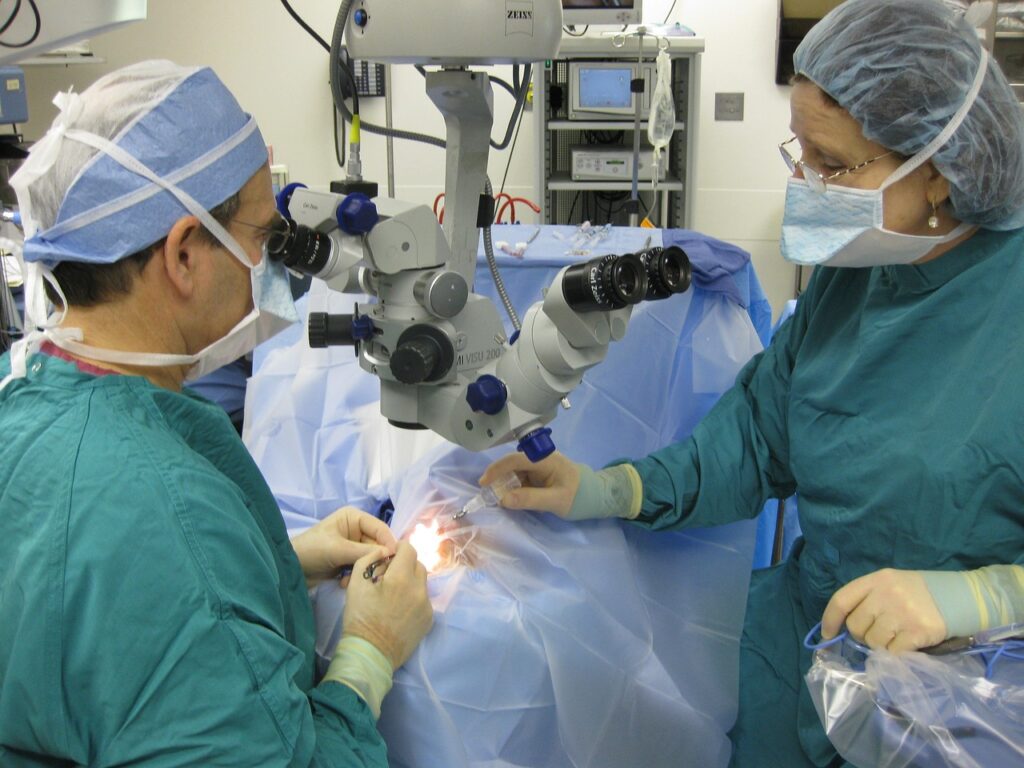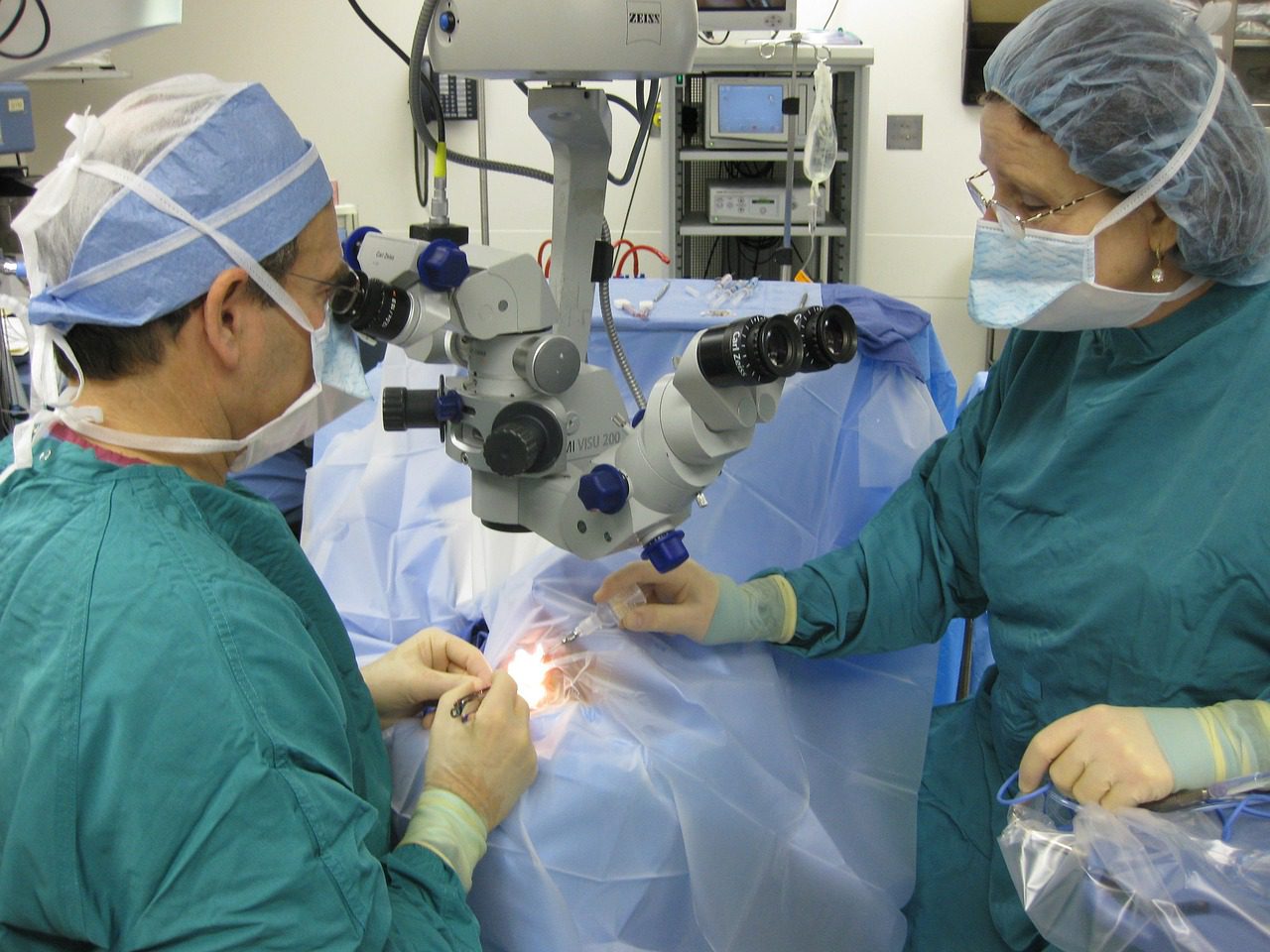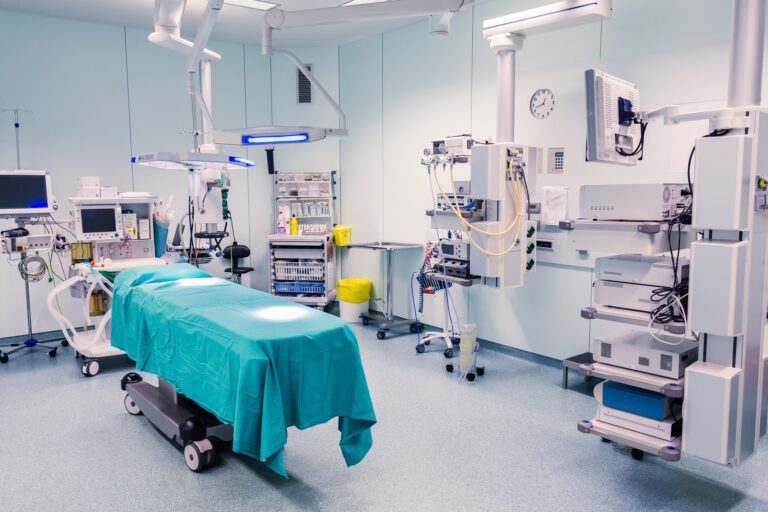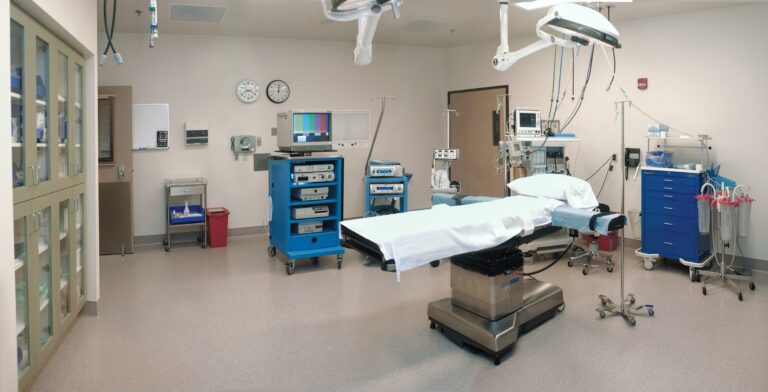
As a surgeon, you’re about to embark on a complex outpatient procedure at one of the surgery centers. It’s important to ensure you have the necessary ambulatory surgical equipment and supplies for the operation. Collaborating with other clinicians and using trusted suppliers can help you streamline your workflow and provide the best care for your patients.
When you enter the operating room, you notice that your ambulatory surgery equipment is outdated and lacks the necessary features for optimal patient care. It’s time to update your inventory with the latest models to ensure better patient care.
Ambulatory surgery equipment encompasses a variety of surgical instruments, supplies, and technology designed specifically for outpatient procedures. With the growing demand for ambulatory surgery centers (ASCs), it’s essential for clinicians to stay up-to-date with the latest advancements in medical equipment for ASCs.
Now, let’s explore the key features and advancements in ambulatory surgery equipment that are revolutionizing the way surgeries are performed outside of traditional hospital settings.
Table of Contents
- 0.1 The Importance of Having the Right Ambulatory Surgery Equipment
- 0.2 Benefits of Choosing the Appropriate Equipment for an ASC
- 0.2.1 Streamlining Workflow Processes and Reducing Procedure Times
- 0.2.2 Enhancing Surgical Precision and Accuracy with Specialized Instruments
- 0.2.3 Optimizing Resource Utilization and Minimizing Wastage through Efficient Equipment Usage
- 0.2.4 Facilitating Seamless Integration with Existing Systems and Technologies in ASCs
- 0.2.5 Increasing Staff Satisfaction by Providing User-Friendly, Ergonomic Devices
- 0.2.6 Building a Reputation for Excellence by Offering State-of-the-Art Facilities
- 0.3 Types of Ambulatory Surgery Equipment Available in the Market
- 0.4 Medical Gas Pipeline System (MGPS) for ASCs
- 0.4.1 Features, Pros, and Cons
- 0.4.2 Medical Gas System Component
- 0.4.3 Steps for Implementing an MGPS in ASCs
- 0.4.4 Medical Gases
- 0.4.5 Ventilation Equipment for Ambulatory Surgery Centers
- 0.4.6 where to buy surgical equipment for Ambulatory Surgery Centers
- 0.4.7 Reliable Online Suppliers for Surgical Equipment
- 0.5 Recommendations for Purchasing Equipment for Ambulatory Surgery Centers
- 0.5.1 Assess Specific Needs Based on Specialties Offered in the ASC
- 0.5.2 Conduct Thorough Research on Equipment Manufacturers and Suppliers
- 0.5.3 Evaluate Equipment Warranties, Maintenance, and Support Services
- 0.5.4 Consider Budget Constraints While Ensuring Quality Standards Are Met
- 0.5.5 Seek Input from Healthcare Professionals and Staff Members for Their Insights
- 0.5.6 Compare Prices, Features, and Reviews to Make Informed Purchasing Decisions
- 0.6 Conclusion
- 0.7 Frequently Asked Questions?
- 0.7.1 What are some key factors to consider when purchasing ambulatory surgery equipment?
- 0.7.2 How do I choose between the different types of ambulatory surgery equipment available on the market?
- 0.7.3 What are the benefits of choosing the appropriate equipment for an ASC?
- 0.7.4 How can I make informed decisions when purchasing ambulatory surgery equipment?
- 0.7.5 Is it necessary to consider after-sales support when buying ambulatory surgery equipment?
- 1 Subscribe to our Newsletter
The Importance of Having the Right Ambulatory Surgery Equipment
Ensuring Patient Safety and Optimal Outcomes
In an ambulatory surgery center (ASC), having the right equipment is crucial to ensuring patient safety and achieving optimal outcomes. The use of appropriate equipment in surgery centers is crucial for minimizing risks, complications, and errors during surgical procedures. By investing in reliable ambulatory equipment and up-to-date tools, surgery centers can provide more patient care.
Enhancing Efficiency and Productivity
Proper equipment selection enhances efficiency and productivity within ASCs. When surgeons have access to the right ambulatory equipment, they can perform procedures more efficiently, reducing the overall time spent on each case. This increased efficiency translates into improved patient flow, allowing ASCs to accommodate more patients and potentially increasing revenue generation.
Meeting Regulatory Requirements and Industry Standards
ASCs must adhere to strict regulatory and industry standards. The use of suitable equipment ensures compliance with these guidelines, preventing any legal or operational issues that may arise from non-compliance. By investing in approved devices and instruments, ASCs demonstrate their commitment to providing high-quality care while maintaining a safe environment for patients and staff.
Minimizing Risks, Complications, and Errors
Using the right tools minimizes the risks associated with surgical procedures. Each procedure requires specific instruments tailored to its unique requirements. Having access to specialized equipment reduces the likelihood of complications arising during surgery.
For example, using advanced imaging technology allows surgeons to visualize anatomical structures with greater clarity, enabling them to perform precise interventions.
Improving Patient Satisfaction
High-quality care is directly linked to patient satisfaction levels. When ASCs invest in reliable equipment that meets their patients’ needs, they enhance the overall experience for those undergoing surgical procedures.
Patients feel confident knowing that their surgeon has access to state-of-the-art tools necessary for their specific procedure. This assurance contributes significantly to patient satisfaction rates.
Maximizing Revenue Generation Potential
Investing in the necessary equipment can also maximize revenue generation potential for ASCs. By offering a wide range of procedures and having the appropriate tools to perform them, ASCs can attract more patients and increase their caseload. This increased volume of cases translates into higher revenue streams for the facility.
Benefits of Choosing the Appropriate Equipment for an ASC
Streamlining Workflow Processes and Reducing Procedure Times
One of the primary advantages of selecting suitable ambulatory surgery equipment is streamlining workflow processes and reducing procedure times. With advanced technology and specialized instruments, procedures can be performed more efficiently, leading to shorter surgical times.
This not only increases patient turnover but also allows surgeons to accommodate more cases in a day. By optimizing workflow processes, ASCs can enhance productivity and maximize revenue potential.
Enhancing Surgical Precision and Accuracy with Specialized Instruments
The use of specialized instruments in ambulatory surgery equipment can significantly enhance surgical precision and accuracy. These instruments are designed to provide surgeons with better control, visibility, and access during procedures.
For example, minimally invasive laparoscopic tools enable surgeons to perform complex surgeries through small incisions, minimizing trauma to surrounding tissues. This results in reduced post-operative pain, faster recovery times, and improved patient outcomes.
Optimizing Resource Utilization and Minimizing Wastage through Efficient Equipment Usage
Choosing appropriate ambulatory surgery equipment helps optimize resource utilization within an ASC setting. By investing in state-of-the-art devices that are specifically tailored to meet the needs of ASCs, facilities can minimize the waste of resources such as time, supplies, and personnel.
For instance, automated surgical systems can streamline instrument sterilization processes, reducing turnaround time between procedures. This ensures that valuable resources are utilized efficiently while maintaining a smooth flow of operations.
Facilitating Seamless Integration with Existing Systems and Technologies in ASCs
Another benefit of selecting suitable ambulatory surgery equipment is its ability to integrate with existing systems and technologies within ASCs seamlessly. Compatibility between different devices and software systems allows for smooth data transfer, communication, and coordination among various departments.
This integration improves overall efficiency, reduces errors, and enhances patient safety. For example, electronic health record (EHR) systems can be seamlessly integrated with surgical equipment to provide real-time access to patient information during procedures.
Increasing Staff Satisfaction by Providing User-Friendly, Ergonomic Devices
Choosing the appropriate ambulatory surgery equipment not only benefits patients but also increases staff satisfaction. User-friendly and ergonomic devices reduce the physical strain on healthcare professionals, minimizing the risk of work-related injuries.
By providing comfortable and intuitive equipment, ASCs can create a positive working environment that promotes staff well-being and productivity. This leads to higher job satisfaction levels among healthcare professionals.
Building a Reputation for Excellence by Offering State-of-the-Art Facilities
Investing in the right ambulatory surgery equipment helps ASCs build a reputation for excellence by offering state-of-the-art facilities. Patients are more likely to choose a facility that utilizes advanced technology and modern equipment, as it instills confidence in their care. By staying current with the latest advancements in medical technology, ASCs can attract patients seeking cutting-edge treatments and procedures.
Types of Ambulatory Surgery Equipment Available in the Market
In the world of ambulatory surgery, having the right equipment is crucial for ensuring successful procedures and patient safety. There are several types of ambulatory surgery equipment available in the market that play vital roles in different aspects of surgical care. Let’s take a closer look at some of these essential pieces of equipment:
Surgical Instruments
Surgical instruments are the backbone of any operating room. They come in various shapes and sizes, each serving a specific purpose during surgical procedures. These instruments are indispensable for surgeons, from scalpels to precise incisions to forceps for grasping tissues, retractors to hold organs aside, and scissors for cutting sutures.
Anesthesia Machines
Administering anesthesia is a critical part of any surgical procedure. Anesthesia machines are specifically designed to deliver controlled amounts of anesthesia gases or vapors to patients during surgery. These machines ensure that patients remain unconscious and pain-free throughout the procedure while monitoring their vital signs.
Monitoring Devices
Monitoring devices are essential for monitoring a patient’s condition during surgery. These devices help healthcare professionals monitor vital signs such as heart rate, blood pressure, oxygen saturation levels, and respiratory rate. By continuously monitoring these parameters, medical staff can quickly identify any changes or abnormalities and take appropriate action.
Imaging Systems
Imaging systems play a crucial role in diagnosing and guiding surgical procedures. X-ray machines provide detailed images that help surgeons visualize bones and detect fractures or abnormalities before or during surgery. Ultrasound scanners use sound waves to create real-time images, aiding in the visualization of soft tissues and organs.
Electrosurgical Units
Electrosurgical units (ESUs) use electrical currents to cut or coagulate tissues during surgeries. These units provide precise control over tissue cutting or coagulation by delivering high-frequency electrical energy through specialized instruments called electrodes. ESUs offer surgeons greater precision and minimize blood loss during procedures.
Endoscopy Systems
Endoscopy systems enable minimally invasive procedures, reducing the need for large incisions. These systems consist of a solid or flexible tube with a camera and light source attached, allowing surgeons to visualize internal organs or structures without making extensive cuts. Compared to traditional open surgeries, endoscopic procedures offer patients faster recovery times, reduced scarring, and fewer complications.
When purchasing ambulatory surgery equipment, it’s crucial to consider factors like quality, reliability, and compatibility with the existing infrastructure. Ambulatory surgery centers (ASCs) should also consider the mobility aids that may be required to move equipment between operating rooms or facilities.
Medical Gas Pipeline System (MGPS) for ASCs
Features, Pros, and Cons
Regarding medical gas supply in Ambulatory Surgical Centers (ASCs), a reliable and efficient Medical Gas Pipeline System (MGPS) is crucial. This system ensures the delivery of medical gases, such as oxygen, nitrous oxide, and compressed air, to various points of use within the facility. Let’s explore the features, pros, and cons of implementing an MGPS in ASCs.
One of the benefits of having a continuous gas supply in ambulatory surgery equipment is that it eliminates the need for cylinders, reducing storage requirements and potential hazards. It also ensures an uninterrupted supply of medical gases, which is crucial for patient safety.
Additionally, it reduces the risk of running out of gas during critical procedures. However, it’s important to note that there are some drawbacks to consider. Initial installation costs can be high, and regular maintenance and monitoring are required to ensure proper functioning.
Moreover, dependence on a centralized system can lead to disruptions if not properly managed. Scalability is another advantage of this type of equipment. It can be easily expanded to accommodate future growth or changes in gas requirements.
This flexibility allows for adding new gas outlets or modifying existing ones without major disruptions. On the other hand, expansion may require additional infrastructure and investment, and careful planning is necessary to ensure compatibility with existing systems.
Another positive aspect is having centralized control over the gas supply. This provides centralized monitoring and control, allowing for quick identification and resolution of any issues or leaks. Furthermore, it enables remote monitoring and alarms for enhanced safety.
However, it’s important to consider that reliance on a centralized control system can lead to vulnerabilities if not properly secured. Additionally, trained personnel are required to operate and maintain the system.
Lastly, the medical gas pipeline system should be designed with various safety measures, such as pressure regulators, alarms, and emergency shut-off valves. This ensures compliance with relevant safety standards and regulations and prioritizes patient well-being.
Medical Gas System Component
Medical gas systems are essential for providing a safe and reliable gas supply in healthcare facilities. These systems consist of various components that work together to ensure the delivery of medical gases to patients. In this section, we will explore the different components of a medical gas system and their functions.
Gas Sources
- Cylinders: Cylinders are the most common source of medical gases. They contain compressed gases such as oxygen, nitrogen, and nitrous oxide. Cylinders are portable and can be easily transported to different areas of the facility as needed.
- Bulk Liquid Systems: Bulk liquid systems store medical gases in large tanks in liquid form. These systems are suitable for high-demand gases like oxygen and nitrogen. The liquid gases are vaporized and supplied to the facility through a distribution system.
Gas Distribution
- Manifolds: Manifolds are distribution points where gases from multiple sources are combined and controlled. They ensure a steady supply of gases to different areas of the facility.
- Piping Network: The piping network consists of a series of pipes that transport gases from the source to the point of use. The pipes are color-coded to indicate the type of gas they carry and are equipped with pressure regulators and valves for control.
Gas Control and Monitoring
- Pressure Regulators: Pressure regulators reduce the high pressure from the source to a safe and consistent level for use. They ensure a controlled flow of gases and prevent pressure fluctuations.
- Flowmeters: Flowmeters measure the rate of gas flow and provide visual indicators. They are commonly used in anesthesia machines and respiratory devices to monitor and adjust the gas flow according to patient needs.
- Alarms and Monitoring Systems: Alarms and monitoring systems are crucial for ensuring the safety of patients and staff. They detect gas leaks, pressure drops, and other abnormalities, triggering alerts to prompt immediate action.
Gas Outlets and Accessories
- Gas Outlets: Gas outlets are connection points where medical devices and equipment are attached to receive gases. They are designed to prevent cross-connection and ensure the correct gas is delivered to the intended device.
- Hose Assemblies: Hose assemblies connect gas outlets to medical devices and equipment. They are flexible and allow for easy maneuverability.
- Medical Gas Outlets: Wall-mounted outlets or pendant-style outlets can be installed at various points of use, providing easy access to medical gases.
- Alarm Systems: Integrated alarm systems can alert staff in case of gas leaks, pressure drops, or other emergencies.
- Backup Systems: Backup power sources, such as generators or battery backups, can ensure continuous gas supply during power outages.
- Gas Distribution Network: Depending on the facility’s needs, the system can be designed with different configurations, including zone valves, manifolds, or ring mains.
Steps for Implementing an MGPS in ASCs
- Conduct a thorough assessment of gas requirements and usage patterns in the ASC.
- Engage with a professional medical gas system provider to design a customized MGPS that meets the facility’s specific needs.
- Obtain the necessary permits and approvals from regulatory authorities.
- Install MGPS infrastructure, including pipelines, outlets, control panels, and safety features.
- Test the system for proper functioning and conduct pressure tests to ensure integrity.
- Train staff on the operations, maintenance, and safety protocols of MGPS.
- Regularly monitor and maintain the system to ensure optimal performance and compliance with safety standards.
Medical Gases
Medical gases in ambulatory surgery centers (ASCs) are crucial for ensuring patients’ safety and comfort. These gases serve various medical purposes, such as inducing sleepiness before surgery or improving breathing.
Oxygen is widely used in ASCs as it is vital in assisting patients who struggle with independent breathing. Nitrous oxide, commonly referred to as “laughing gas,” is administered to help patients relax and alleviate pain during specific procedures.
Halothane is a powerful anesthetic commonly used in ambulatory surgery centers to ensure patients remain unconscious and pain-free during procedures. It is highly effective in providing deep and reliable sedation.
However, it is important to note that it can cause respiratory depression and compromise the patient’s breathing. One of the benefits of using halothane is its rapid onset and offset, allowing for a smooth and efficient start to surgical procedures.
However, quick recovery from halothane anesthesia can sometimes lead to abrupt awakenings, causing confusion and disorientation in patients. Halothane is metabolized to a minimal extent in the body, reducing the risk of toxic byproducts.
However, the small amount of metabolism that does occur can lead to the formation of hepatotoxic compounds, posing a risk to the liver. In ambulatory surgery centers, halothane is commonly used for surgical procedures like appendectomies, tonsillectomies, and hernia repairs.
While other gases like carbon dioxide and helium are less frequently employed, using medical gases in ASCs offers the advantage of easily adjusting the dosage according to each patient’s requirements. Nonetheless, concerns regarding allergies or sensitivities to certain gases also exist.
Ventilation Equipment for Ambulatory Surgery Centers
Ambulatory surgery centers are vital in providing medical care to patients who require same-day surgical procedures. One of the key aspects that contribute to the success of these centers is the presence of proper ventilation equipment.
This equipment helps maintain a safe and healthy environment for patients and ensures the well-being of the medical staff. When selecting ventilation equipment for an ambulatory surgery center, it is crucial to consider the facility’s specific needs and requirements. Factors such as the center’s size, the types of procedures performed, and even the local climate should all be taken into account.
For instance, a larger facility may require more powerful ventilation systems to effectively circulate air throughout the space, while a smaller center may be able to function well with a simpler system. Additionally, the types of procedures performed at the center can influence the choice of ventilation equipment. Certain procedures may generate more airborne contaminants than others, necessitating the use of specialized filters or air purifiers.
It is important to assess the potential risks associated with different procedures and ensure that the chosen ventilation equipment can effectively mitigate them. Furthermore, regular maintenance and cleaning of ventilation systems are essential to ensuring optimal performance. Over time, dust, dirt, and other particles can accumulate in the system, reducing its efficiency and potentially compromising air quality.
Regular inspection and cleaning routines should be implemented to prevent any buildup and ensure the ventilation equipment is functioning at its best.
where to buy surgical equipment for Ambulatory Surgery Centers
Now, you’ll definitely need to know where to buy surgical equipment for ambulatory surgery centers. Well, let me tell you, a few reliable online suppliers can provide you with top-notch equipment at competitive prices.
Reliable Online Suppliers for Surgical Equipment
When it comes to purchasing surgical equipment for ambulatory surgery centers, it’s important to find reliable online suppliers that offer top-notch equipment at competitive prices. Here are a few options to consider:
These online suppliers have established themselves as trusted sources of surgical equipment and have received positive reviews from customers in the medical field. Here are some additional options and features to consider:
- Supplier D offers a wide selection of surgical instruments and equipment, including specialized tools for specific procedures.
- Supplier E: Provides discounted prices for ambulatory surgery centers and offers bulk purchasing options.
- Supplier F: Focuses on eco-friendly surgical equipment and offers sustainable alternatives to traditional products.
- Supplier G: Offers leasing options for surgical equipment, allowing ambulatory surgery centers to access the latest technology without a large upfront investment.
When choosing a supplier, consider factors such as product quality, pricing, shipping options, and customer support. It’s also helpful to read reviews and testimonials from other medical professionals who have purchased from these suppliers.
Remember, purchasing surgical equipment is a crucial investment for ambulatory Surgery Centers, so it’s important to choose a reliable supplier that can meet your specific needs. Take the time to research and compare options to ensure you find the best equipment at the best prices.
Recommendations for Purchasing Equipment for Ambulatory Surgery Centers
To ensure the smooth operation and success of an ambulatory surgery center (ASC), investing in high-quality equipment that meets the facility’s specific needs is crucial. Here are some key recommendations to consider when purchasing ambulatory surgery equipment:
Assess Specific Needs Based on Specialties Offered in the ASC
Before making any purchasing decisions, it is essential to assess the specific needs of your ASC based on the specialties offered. Different procedures require different types of equipment, so understanding which specialties your center will focus on will help you narrow down your options. For example, if your ASC specializes in orthopedic surgeries, you may need equipment such as arthroscopic instruments or joint replacement systems.
Conduct Thorough Research on Equipment Manufacturers and Suppliers
When investing in ambulatory surgery equipment, conducting thorough research on various manufacturers and suppliers is vital. Look for reputable companies with a proven record of producing reliable and durable equipment. Consider factors such as their experience in the industry, customer reviews, and certifications. Contact other ASCs or healthcare professionals for recommendations or insights into their experiences with different manufacturers.
Evaluate Equipment Warranties, Maintenance, and Support Services
Equipment warranties, maintenance plans, and support services are crucial in ensuring the longevity and functionality of your ambulatory surgery equipment. When comparing different products or suppliers, carefully review the warranty terms offered by each manufacturer. Inquire about maintenance requirements and whether they offer ongoing support services such as training programs or technical assistance.
Consider Budget Constraints While Ensuring Quality Standards Are Met
While budget constraints are important when purchasing ambulatory surgery equipment, it is equally important not to compromise on quality standards. Cheaper alternatives may seem appealing initially but could cost more in terms of repairs or replacements down the line. Balance cost-effectiveness and quality by exploring different options, negotiating prices, and considering long-term value.
Seek Input from Healthcare Professionals and Staff Members for Their Insights
When making significant purchasing decisions for your ASC, seeking input from healthcare professionals and staff members who will be directly involved in using the equipment is beneficial. They can provide valuable insights based on their experience and knowledge of specific procedures. Engage them in decision-making to ensure that the equipment meets their requirements and preferences.
Compare Prices, Features, and Reviews to Make Informed Purchasing Decisions
Making informed purchasing decisions, comparing prices, features, and reviews of different ambulatory surgery equipment options is essential. Consider factors such as functionality, ease of use, durability, and compatibility with existing systems or instruments. Look for unbiased reviews from reputable sources or consult with industry experts to better understand each product’s pros and cons.
Conclusion
Congratulations! You have now gained a comprehensive understanding of the importance of having the right ambulatory surgery equipment and the factors to consider when making a purchase.
Choosing the appropriate equipment for your ambulatory surgery center (ASC) can enhance patient care, improve efficiency, and boost overall productivity. Remember, investing in high-quality equipment is an investment in the success of your ASC.
Now that you have this knowledge, it’s time to take action. Start by assessing your specific needs and budget constraints, considering the earlier recommendations. Research different suppliers and manufacturers to find reliable options that meet your requirements.
Don’t hesitate to consult experts or seek advice from professionals with experience purchasing ambulatory surgery equipment. With careful consideration and informed decision-making, you’ll be well on your way to creating a thriving ASC that provides exceptional patient care.
Frequently Asked Questions?
What are some key factors to consider when purchasing ambulatory surgery equipment?
Several factors should influence your decision-making process when purchasing ambulatory surgery equipment. First and foremost, consider the specific needs of your ambulatory surgery center (ASC) and ensure that the equipment meets those requirements adequately. Assess the quality and reliability of the equipment, as durability is crucial for long-term use.
Cost is another significant factor; while staying within budget constraints is essential, remember not to compromise on quality for cheaper alternatives. Lastly, take into account after-sales support, warranty options, and training availability from suppliers.
How do I choose between the different types of ambulatory surgery equipment available on the market?
Choosing between different types of ambulatory surgery equipment can be overwhelming. To make an informed decision, start by evaluating what specific procedures or services your ASC offers. Consider factors such as patient volume, surgical specialties, and anticipated growth potential.
Then research various options available on the market, comparing features, specifications, and customer reviews. Don’t hesitate to reach out to suppliers for additional information or request demonstrations to assess the equipment’s functionality firsthand.
What are the benefits of choosing the appropriate equipment for an ASC?
Choosing the appropriate equipment for your ambulatory surgery center (ASC) has numerous benefits. First, it ensures optimal patient care by providing reliable tools that facilitate accurate diagnoses and effective treatments. Second, suitable equipment enhances efficiency within your ASC, improving workflow and reducing procedural time.
This increased efficiency translates into higher patient throughput and potentially improved revenue generation. Lastly, investing in quality equipment demonstrates your commitment to excellence and can help attract top-tier healthcare professionals who value well-equipped facilities.
How can I make informed decisions when purchasing ambulatory surgery equipment?
To make informed decisions when purchasing ambulatory surgery equipment, start by conducting thorough research on the various available options. Consider factors such as quality, reliability, cost-effectiveness, and compatibility with your ASC’s specific needs. Seek recommendations from industry experts or consult with professionals with experience procuring such equipment.
Take advantage of supplier resources, such as product specifications and customer testimonials. Combining knowledge gained from research with expert advice, you can confidently make informed decisions aligning with your ASC’s goals.
Is it necessary to consider after-sales support when buying ambulatory surgery equipment?
Yes! Considering after-sales support is crucial when buying ambulatory surgery equipment. Ensure the supplier offers comprehensive after-sales services such as technical support, maintenance plans, and readily available spare parts.
Adequate after-sales support guarantees prompt assistance if any issues arise with the purchased equipment during its lifespan. It also minimizes downtime during repairs or maintenance activities, so your ASC can continue operating smoothly without interruptions.



